Melissa Fisher and Hana Kassem explore how a cultural anthropological understanding can inform architectural design to create more human-centric, inclusive, resilient, healthy, and sustainable work environments and cultures.
Following the ‘work-from-home’ reality of the pandemic, and movements like Black Lives Matter, in addition to climate activism, and the omnipresence of AI, we find ourselves in a sea of changes that are tangibly influencing the way we work and live. How can we design more human-centric, inclusive, resilient, healthy, and sustainable work environments that support the evolving workplace culture of today?
To address this question, it is crucial to recognize the significance of ideas originating from cultural anthropology, a field often misperceived as exclusively studying the “exotic.” We believe that a cultural anthropological perspective can offer valuable insights that can enrich and shape architectural approaches during the current era of transformation.
…It is crucial to recognize the significance of ideas originating from cultural anthropology…
Today anthropologists are more likely to study Wall Street firms or Silicon Valley technology startups, rather than the Kula ring of economic exchange in the Trobriand Islands. This work has shown the ways the cultural, social, and spatial structures, including the specifics of design, and amenities matter most in workplace environments. For example, as ethnographers of finance sectors observe, the spatial arrangement of where traders sit on the trading floor has an impact on how they see and hear other traders, access technologies, and receive and interpret information (Downey and Fisher, 2006).
At the same time, anthropological concepts, theories, and methods have been assimilated into corporate venues, as more anthropologists work for JP Morgan Chase, Intel, and Meta. Drawing on the discipline’s signature method fieldwork (participant-observation), professional anthropologists are able to gain deep insights into the mindset of employees; help organizations understand their workplace culture; and provide practical solutions to questions such as how to draw employees back to the office and how to foster stronger, cohesive, and inclusive communities.
In an era where flexible and remote work is becoming increasingly prevalent, architects also adapt workplaces to accommodate evolving trends, advances in technologies, and sustainability goals.
Architects play a pivotal role in workplace design, where their expertise goes beyond aesthetics to shape environments that enhance productivity, well-being, and collaboration. They consider the spatial layout, lighting, acoustics, and ergonomic aspects to create effective and inspiring workspaces. Moreover, architects must align their designs with the unique culture and needs of the organization and society of today, fostering a sense of identity and belonging among employees. In an era where flexible and remote work is becoming increasingly prevalent, architects also adapt workplaces to accommodate evolving trends, advances in technologies, and sustainability goals. Their role in workplace design, if well informed, can greatly contribute to the creation of dynamic, efficient, and employee-friendly settings that promote well-being, innovation, and the fulfillment of the greatest collective and individual potentials.
Most architectural research methods adopt quantitative and non-immersive qualitative techniques drawing primarily on surveys, focus groups, and interviews. Such methods alone, however, cannot fully provide an in-depth detailed account of the impact of the built environment on the employees’ lived experiences and may not carry enough nuance to positively inform workplace design.
To address these methodological lacunae, we introduce an anthropologically-informed, architectural approach to shaping work environments. As such we build on key methods and concepts in anthropology, namely ethnography and culture, linking them to architectural ideas and practice.
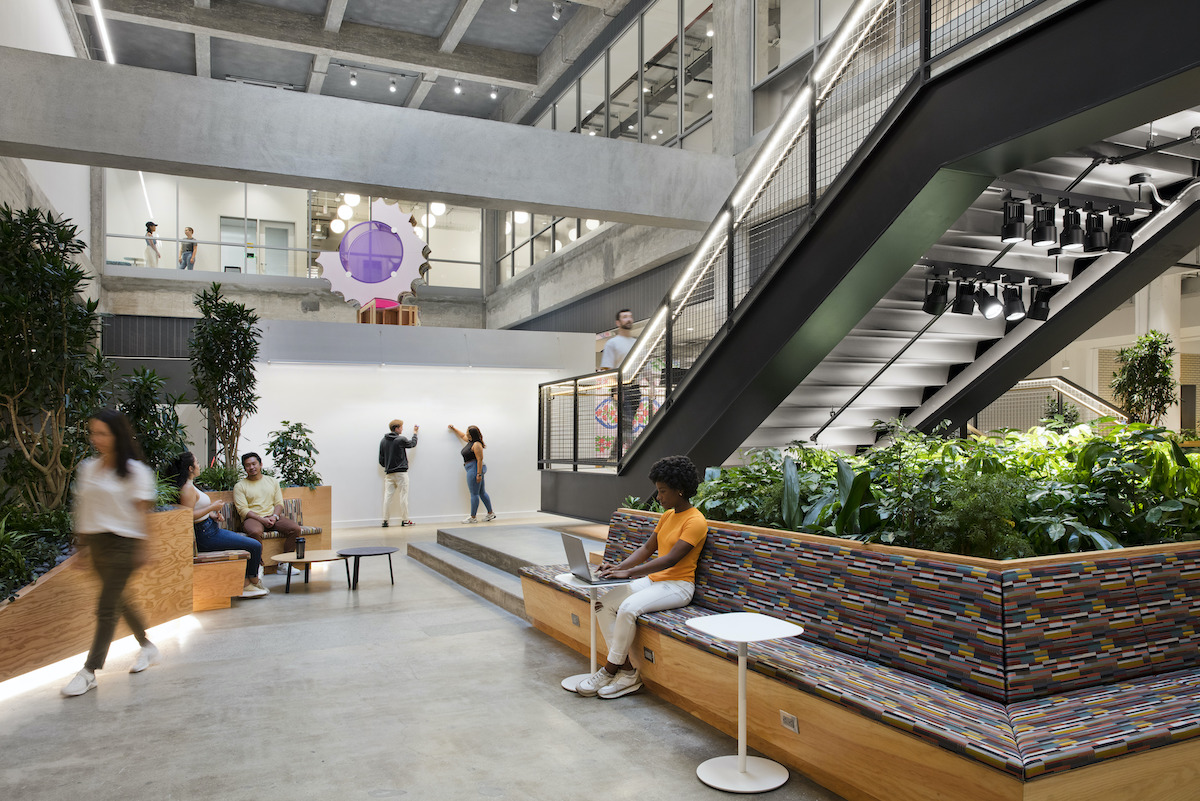
Ethnography: Discerning the World View of Employees and their Behavior
Workplace anthropologists are experts in understanding the worldview and behavior of employees from the bottom of corporate hierarchies to their top. To accomplish this, they engage in ethnography by listening to many different types of employees, their stories, as well as short term participant-observation of how they navigate and make meaning of their workplace. This enables anthropologists to discern employees’ mindsets, including their assumptions, aspirations, anxieties, joys, and hopes for the future about work in particular, and life in general. For example, researchers have uncovered that gen-z members aspire to engage first and foremost in meaningful work, have better work-life balance, and collaborate with others equally in the physical and virtual office.
Anthropologists also draw on ethnographic techniques to elicit views of employees’ cognitive maps of the physical and digital workplace, including their ways of working (new and old) feelings of belonging or feeling excluded; as well as their attachment or lack thereof to place(s). For example, ethnographers have observed how highly skilled Indian coders working in Berlin offices are racialized and thought of as temporary gig workers, in spite of their aspirations and perceptions of themselves as members of the (global) middle class (Amrute, 2016). Discerning nuances and differences according to gender, race, ethnicity, and life experiences, which ultimately, if incorporated into the design approach, make for a more inclusive environment, ultimately promoting diversity and equity in the workplace.
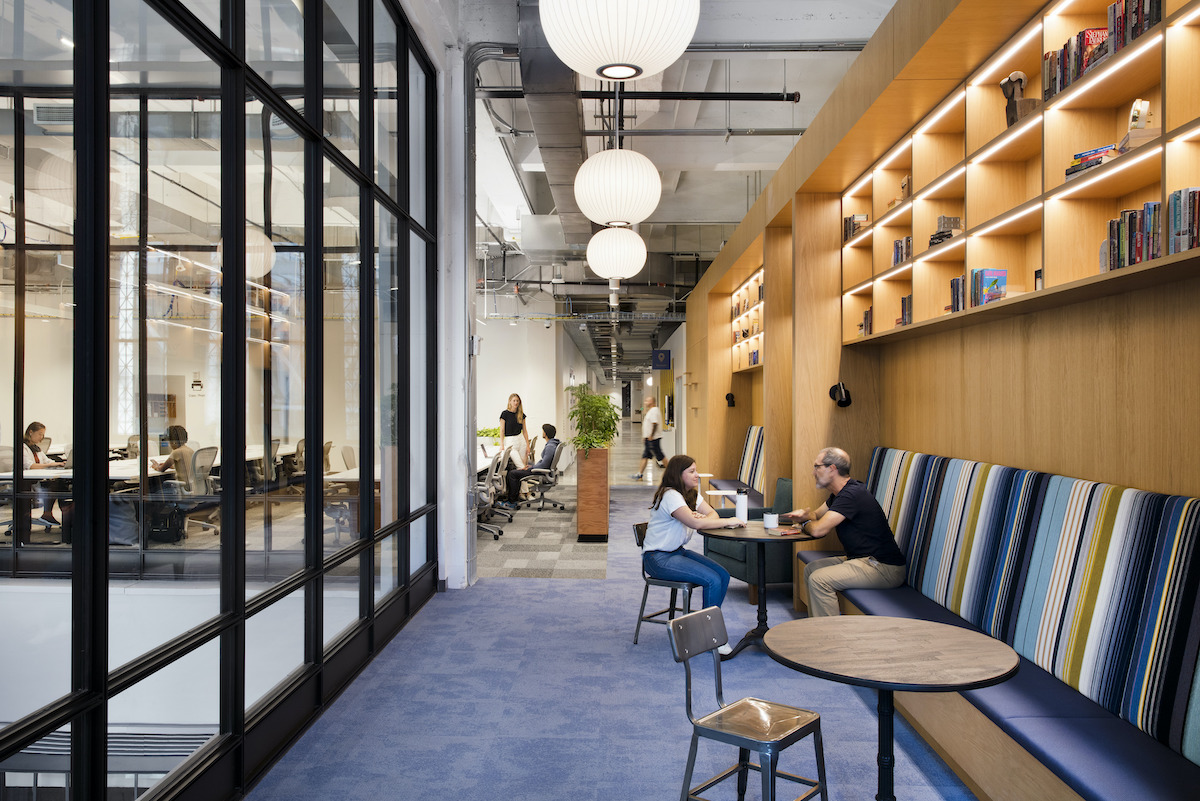
As many companies look at rethinking their workplace environments for the needs of today, they may want to draw on anthropological methods and analysis to answer certain critical questions such as: What will their employees want to come back to work in an office environment for? How to introduce in-person workplace culture to young employees who have never experienced it, having begun their work life remotely during the pandemic? What will strengthen community and belonging? What spatial environments will better foster mentorship and advancement with diversity and inclusion in mind? And they may even learn about aspects of the ‘old’ workplace which are still valuable and ought to be incorporated into the ‘new’ in order to build on the identity of a given workplace culture while rethinking it and manifesting its aspirations.
Multi-Sited Ethnography: Connections between People, Places, and Technologies
In a global and increasingly hybrid world of work, professional anthropologists are also incorporating multi-sited ethnographic techniques into their tool-kit, breaking with exclusively drawing on traditional workplace ethnography which tends to remain in a single field or building. This entails following people, connections, and technologies across workspaces, for example, as individuals move from work at home to co-working spaces and back, or when traders in Manhattan trade on the screen with financiers in Tokyo, and other financial centers.
Multi-sited fieldwork is especially proficient at enabling anthropologists to follow work-project making including how various people (executives, office managers, assistants etc.), material objects (lights, furniture, boards, etc.) and technologies, come together to collaborate in physical space and may then disperse. The purpose is to grasp the experience of different employees, their work practices, the hours spent, the lighting they prefer, the kinds of communication, and the plethora of activities spent in a particular space or set of spaces. This approach translates into architecture and design by distilling the essence and values of a company or user group and translating these into what makes up the workplace environments. When done successfully, a common cultural narrative threads through the spatial arrangements, material choices, design language (the “look and feel”) so as to reflect back to the employee a distinct sense of place which ultimately strengthens a sense of community and belonging.
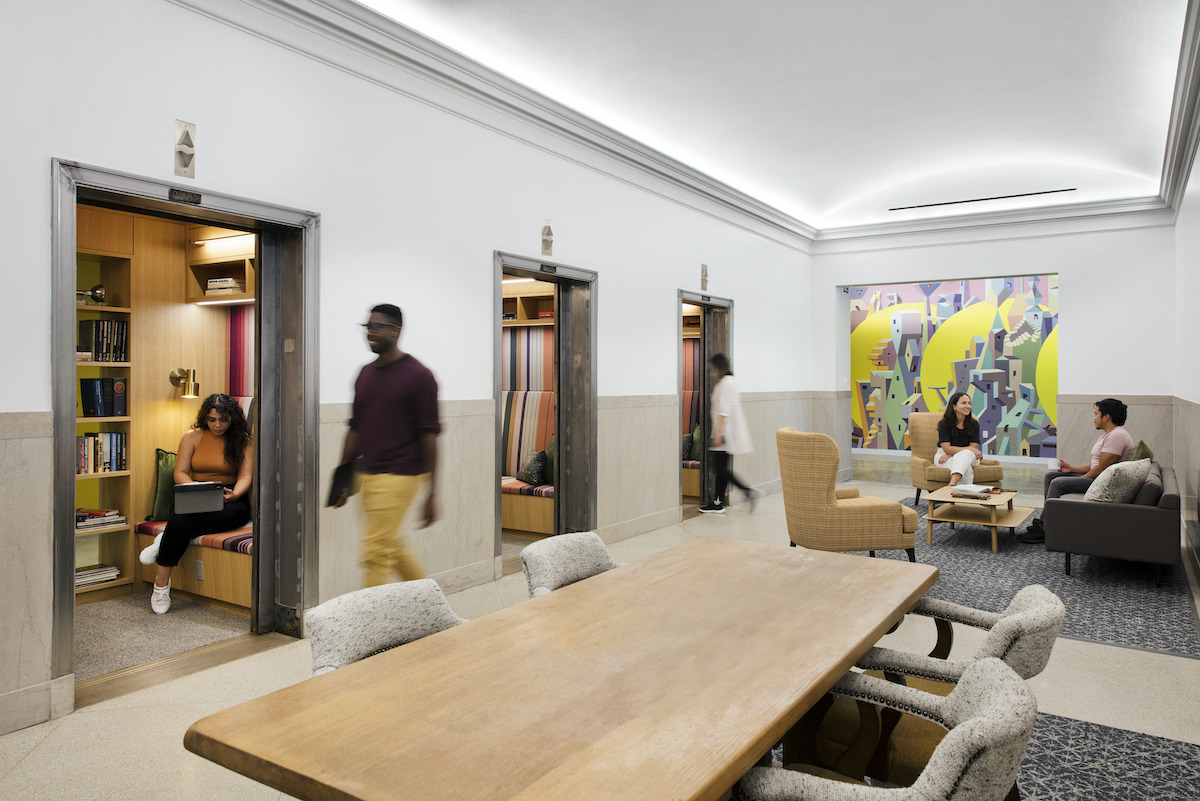
Workplace Culture and the Broader Socio-Cultural and Economic Context
Anthropologists are also particularly expert in understanding workplace culture defined as a system of beliefs, values, rituals, and symbols. Drawing on single and multi-sited fieldwork techniques, they can answer such questions as what is the culture? How does it shape how people forge community? What role do everyday rituals, such as coming together for coffee to talk before the official workday begins, play in bringing people together to forge a common worldview and identity? And how might such informal conversational practices provide people with opportunities to access “incidental information,” information that can contribute to a given project’s and their own professional success?
Designing with awareness that certain attributes and qualities of environments can foster such exchanges puts a considerable amount of responsibility in the hand of the architect. Indeed, the crafting of those “in between” spaces carry much nuance, from the particular configuration of the seating, the choice of upholstery firmness, color, and texture, to the type of lighting. Details such as the width of banister which may or may not allow for someone to put a cup of coffee down while conversing with a colleague, have everything to do with the affordances a space provides and in turn how it can contribute to a thriving workplace culture. The pandemic years have also played their part in heightening awareness of what are considered ‘healthy environments’ and have boosted the inclusion of biophilic design into virtually all workplace environments; this is effectively an unstated societal acknowledgement of the connection between environments, physical and mental well-being and optimal cognitive function.
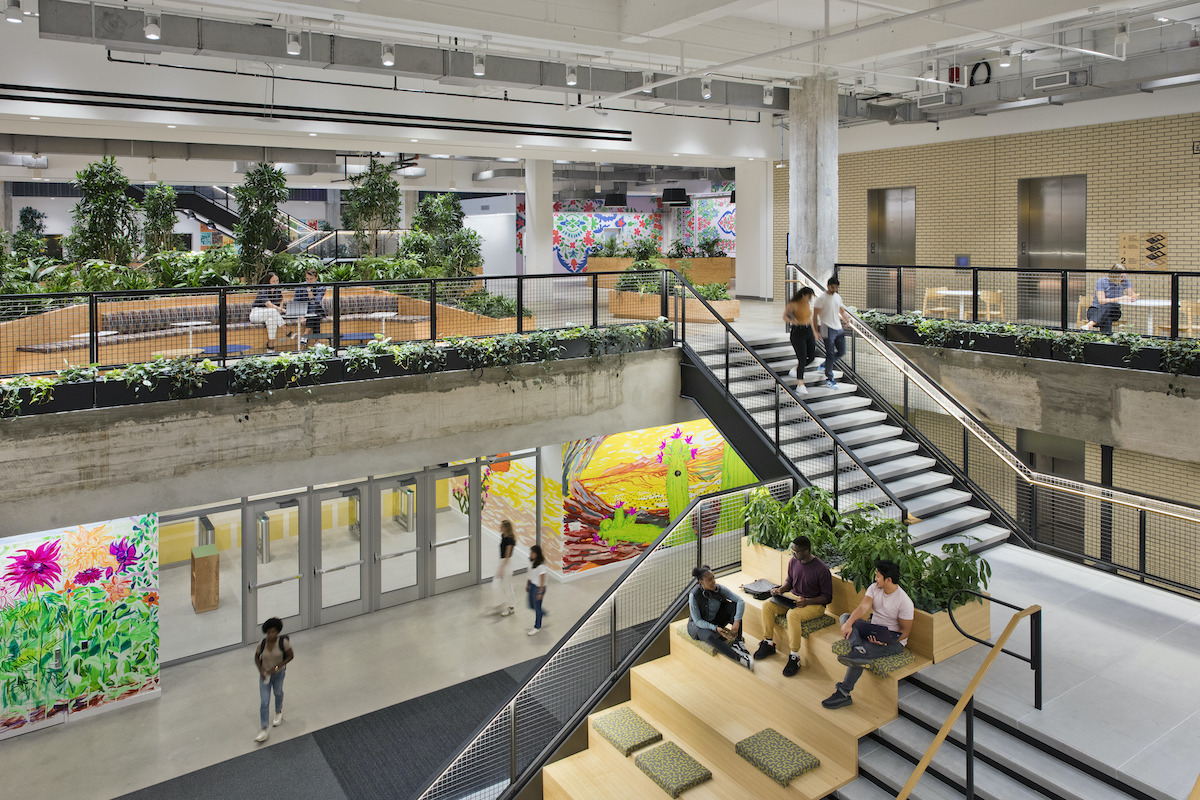
Moreover, anthropology can not only help us understand workplace culture and the worldview of various employees. It can also provide deep insight into the broader socio-cultural and economic context that shape employees’ ideas and behavior towards work. For some time, anthropologists have argued that the office has always been an arena of shifting rules and behavior that draws on cultural notions of self-worth, success, social relations (including those of gender and race) as well as demographic, technological, and economic change. For example, ethnographers have shown how people use co-working spaces as theatrical settings; People appropriate the physical layout, furniture, décor, and services, to provide them with the cultural capital and professional status and identity they may not be able to convey virtually so readily (Grazian, 2019). A deep understanding of how hybrid work is reshaping employee behavior in the physical workplace, based on fieldwork (participant-observation), provides critical information and insights to architects.
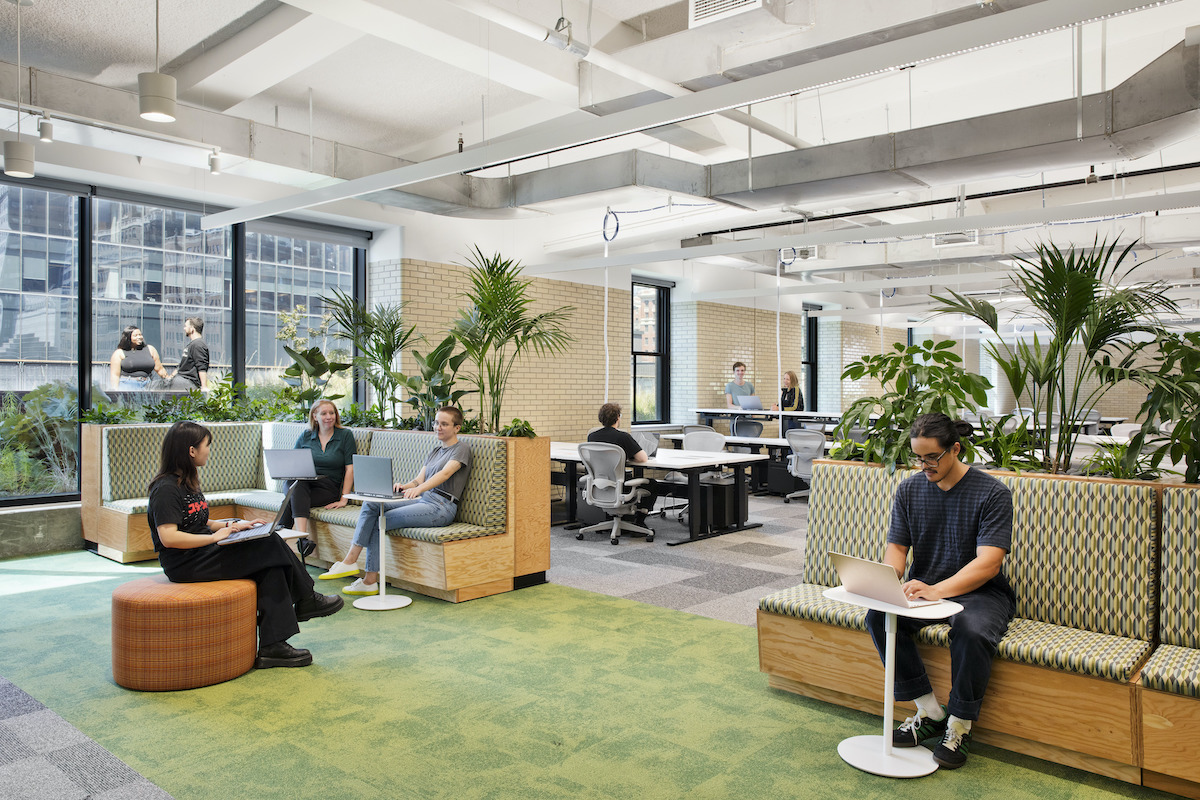
The intersection between ethnography and architectural design lies in their shared emphasis on culture as a fundamental influencer. Ethnography, as a method in cultural anthropology, involves deep immersion in communities to understand their values, behaviors, and lifestyles. Similarly, architects recognize the profound impact of culture on design, incorporating elements that reflect and accommodate the cultural context of a space. However, each discipline may define and employ cultural concepts differently. Ethnographers tend to prioritize the qualitative understanding of culture, while architects often focus on tangible design elements.
Conclusion
A promising fusion of these approaches involves architects collaborating with ethnographers, leveraging ethnographic insights to inform designs that employ aesthetics, planning and detailing to resonate with the cultural nuances of a given community or context. This synthesis can lead to more culturally sensitive, inclusive, and effective workplace design outcomes that allow employees and companies to navigate the sea of changes we have embarked on for the better; learning from the pandemic years about our true values, our habits and certainly our aspirations.
Bibliography
- Amrute, Sareeta. 2016. Encoding Race, Encoding Class. Durham: Duke University Press.
- Downey, Greg, and Melissa S. Fisher. 2006. Introduction: The Anthropology of Capital and the Frontiers of Ethnography. In Frontiers of Capital: Ethnographic Reflections on the New Economy. M. Fisher and G. Downey, eds. Pp.1–32. Durham: Duke University Press
- Grazian, D. Thank God it’s Monday: Manhattan coworking spaces in the new economy. Theory and Society 49, 991–1019 (2020)


